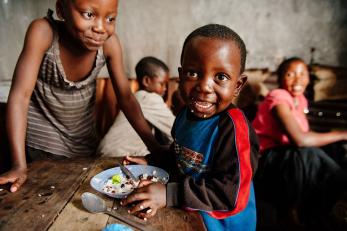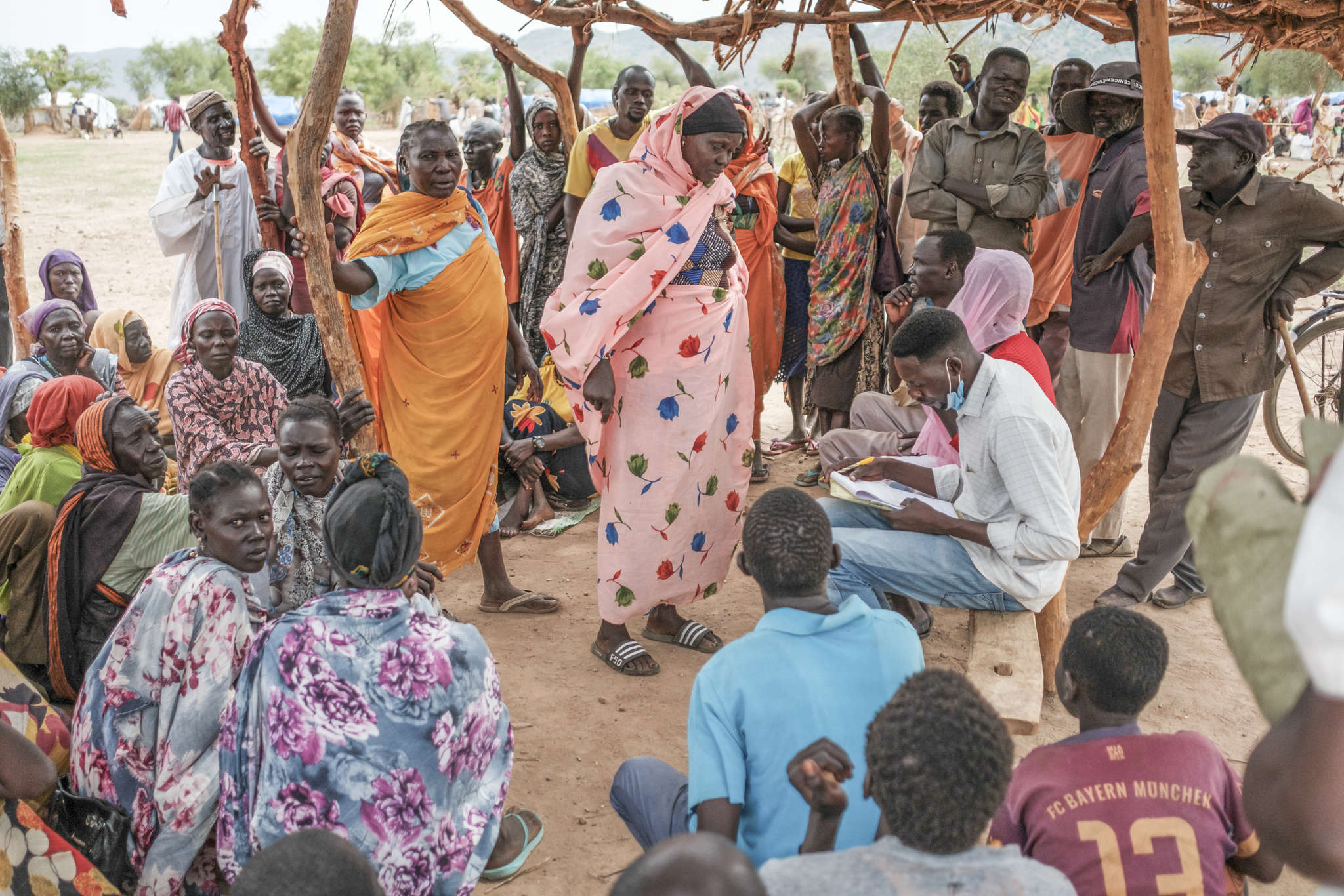Starving children: Beyond the photos

Editor's note: This article was originally published April 14, 2017; it was updated February 16, 2018, to reflect the latest information.
The road to starvation can be long and agonizing. But for Hauwa, it happened in an instant.
One afternoon last February, Hauwa and her five children were home on their farm in Nigeria when the distant rumble of motorcycles broke through the peace of their village. Boko Haram had come. The village scattered: Hauwa dropped everything, grabbed her kids, untied the family cow and sprinted into the wilderness. In a single moment, the life they knew was over.
For two days they walked north, outflanking the gunmen in a zigzag pattern far from the main road. Hauwa kept her 1-year-old on her back; her 10-year-old boy watched the other three. Every few feet they would stop to rest, her children’s legs too swollen to go any farther. There was nothing to eat, and only enough water to wet their throats. At night she would lay the children shoulder-to-shoulder in the dust and cover them with a blanket, keeping watch until the sky began to turn gray. Then it was once again time to move.
By the time they made it to the city of Damboa, the gears of hunger were already in motion. Hauwa and her family were now homeless and without work. Their farm was burned, their animals lost. They were being pulled into a long story that had started years before, in places far away — a chain of conflict, political instability, poverty and disaster that they had nothing to do with, yet which had now left them with nothing.
And bearing the weight of it all were Modu, Umar, Abdu, Mariam and Halima: five small children whose lives had been fractured, and who were now, along with their mother, in danger of starving.

Starving children often become the face of a hunger crisis. But behind every photo that captures the world’s attention is a picture that’s harder to see: a grueling sequence of politics, economics, war and disaster that ends, mercilessly, in a child with nothing to eat.
Hunger starts far away — in the rumbles of political instability, the chaos of war, and the slow burn of climate change. It can build for years beneath the headlines. The moment we hear of a hunger crisis is often too late: In the 2011 Somalia famine, half the 250,000 people who died perished before famine was officially declared.
The moment to intervene is much earlier. FEWS NET, or the Famine Early Warning Systems Network, ranks the phases of food insecurity on a five-level scale. Though famine is the most catastrophic phase, it is also the last one: The danger starts long before, even in phase 1, referred to as “minimal” food insecurity. At that point, 20 percent of homes are depending on food aid or beginning to sell off their assets, like cows.
There are no photos of phase 1 food insecurity; no headlines or starving children. Which means it’s the right moment to step in.
Mercy Corps takes a long-term approach to food insecurity, working with communities to build systems where everyone can have enough to eat long-term. We train farmers with modern methods to grow more crops, and then connect them to markets where they can increase their incomes. We teach new mothers how to breastfeed their infants and cook nutritious meals for their children. We promote job skills training, help people save money, improve veterinary services and work to combat the effects of climate change.
If done early enough, these interventions can help people survive severe shocks and stress. But if we wait, the need becomes exponentially worse. By phase 3, a community is beginning to see high malnutrition rates; by phase 4, people are beginning to die. Phase 5, the “famine” phase, is when the world often becomes aware — but widespread starvation has already taken root.
Today, four countries face a credible risk of famine: Nigeria, Somalia, South Sudan and Yemen. But 815 million people are hungry around the world, trying to survive in one of these earlier phases. They move between villages, looking for work that doesn’t exist. They stare at dry fields, wondering when the rain will return.
Or, like Hauwa, they simply watch their children and think of how they will be able to eat again.
“Whenever I see my children suffering, it makes me cry,” Hauwa says. “Especially when I remember how we were before we came to this place, because I never lacked anything when I was at home. But now I don’t have anything.”
Hauwa remembers their trauma whenever she looks at her kids. But she also remembers how close they were to something even worse: When her children were escaping through the wilderness, they passed the bodies of 30 people who didn’t make it.
The burden of conflict

The first 1,000 days of a child’s life are critical. That’s when the body and brain are growing most rapidly, and proper nutrition is vital. But for many children, their chance at a healthy future is put on hold by conflict — the main driver of hunger around the world.
Violence doesn’t just displace families; it puts overwhelming pressure on the communities where those families end up. After just two months in Damboa, Hauwa and her children had to leave again because there was nothing to eat. So today they live in Sabon Gari, a small village of 3,000 people that has swollen to nearly 10,000 on a tide of Boko Haram refugees. The problem extends beyond Nigeria’s borders—more than 360,000 refugees have migrated from South Sudan to Ethiopia.
But there are no resources to support them, in Hauwa’s village or anywhere else. Every day, people wander into Sabon Gari from the bush — but the markets have been shut down, and there is no food to buy. A villager gave Hauwa a small plot to farm, but she didn’t know the land or understand its tendencies. A nearby river swelled its banks and flooded everything she was growing.
A dangerous ideology, a violent insurgency, a more extreme climate — it all adds up to the fact that most days, Hauwa’s children don’t eat. Hauwa’s own body is beginning to waste away, little by little, and her 1-year-old, the one who depends on her most, is now sick.
They are alive, but only barely, trying to escape the cruel math of starvation: For every two days Hauwa finds work, she can buy one day of food.
“My children are crying for the hunger,” she says. “I have lost a lot of weight during this time because of being hungry and working hard so I can get food for my kids.”
How you can help

For every person who is suffering from hunger or famine, there is a story like Hauwa's. And there are many opportunities along the way to provide a better outcome — before the need is so dire.
There is enough food to feed everyone in the world. But there is still so much work to be done to ensure everyone has access to enough to eat. We need your help.


